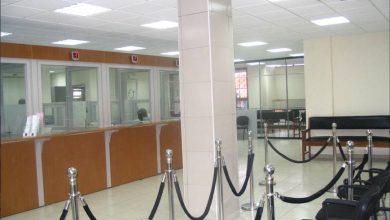Balancing the kwacha exchange rate
Through the Monetary Policy Committee (MPC) meeting of July 28 2015, authorities at the Reserve Bank of Malawi (RBM) led by Governor Charles Chuka made two critical policy decisions.
First was the reduction of the Liquidity Reserve Requirement (LRR) ratio—a portion of depositors’ money commercial banks deposit with the central bank—for the rainy day. This decision means that banks now have more money at their disposal; hence, we have seen Standard Bank and National Bank of Malawi leading the way in lowering—at least by Malawian financial industry standards— their base lending rates to 32 percent.
In the second decision, RBM came out like a wounded buffalo seeking revenge and went full throttle blaming everyone, but itself for the sudden ‘misbehaviour’ of our one and only local currency, the kwacha.
Briefly, RBM has attributed the kwacha’s sharp depreciation or loss in value to speculative tendencies by some dealers in authorised dealer banks (ADBs) entrusted with the responsibility of working out the exchange rate values.
How are exchange rates determined in Malawi or, indeed, elsewhere in the developed world?
Exchange rates are critical and sensitive. Exchange rate refers to the price of a country’s currency, such as our kwacha, in relation to the currency of another country or region like the euro. It is mostly expressed in terms of the value or how many units of a particular currency can redeem another currency.
In an ideal situation, values of exchange rates, like all other commodities, should be decided by market forces of demand and supply. This means that where the demand for the dollar (or any other currency) exceeds what the banks have in stock, then the price or value should go up.
However, due to the sensitive nature of the commodity at stake, central bank intervention is another factor in deciding the value of the kwacha. To ensure sanity, RBM ensures that the exchange rate value does not reach levels that would hurt the economy, so to speak. This is why RBM last week undertook steps to “tame” the hitherto elusive kwacha by, among others, restricting ADBs from determining the day’s foreign exchange market price. In some cases, the central bank floods the market with more dollars.
Between July 1 and 29, the kwacha fell or lost value by around 12 percent against the dollar from buying one dollar at K453 to K509 as of July 28, according to RBM figures.
RBM accused banks of being “driven by greed”; hence, the order to restrict the daily movement of kwacha within a certain band. Now, the kwacha is under managed float.
What is ironic with the kwacha’s free-fall is that it has come at a time the marketing season for tobacco—the country’s main foreign exchange earner—is in progress yet during the lean demand period for forex, the kwacha stood its ground.
I have known most of the financial market dealers—the professionals not to be mistaken for ziomba found in dark street alleys engaging in shoddy deals—to be fine bankers not driven by greed. However, having followed the case of one fine London banker, 35-year-old Tom Hayes, who has been found guilty of manipulating and fixing the London international interbank lending rate (Libor) to make quick bucks, anything is possible.
Malawi being a predominantly importing and consuming nation, foreign exchange rates are sensitive and a matter of life and death. Either way the value of the kwacha goes, there are implications to the economy and individuals. For example, when the kwacha depreciates or loses value, exporters gain whereas when the kwacha gains or appreciates, importers celebrate as they raise few kwachas to bring in their goods and services.
Is the economy really sitting on $1 billion in foreign exchange reserves or it is a case of liars using numbers? Remember, numbers do not lie, but liars use numbers. n


